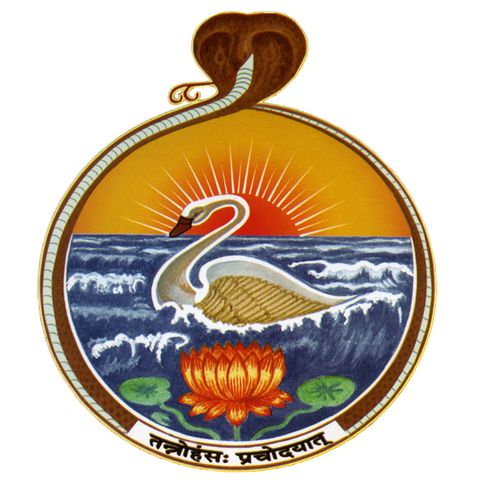Vivekachudamani 13 - Maya – Avarana and Vikshepa Shakti | Swami Tattwamayananda

Download and listen anywhere
Download your favorite episodes and enjoy them, wherever you are! Sign up or log in now to access offline listening.
Description
Verses: 110-114 This lecture was given by Swami Tattwamayananda at Stanford University on September 15, 2019. The lecture was hosted by the Stanford Hindu Students Association. Vivekachudamani is a prakarna...
show moreThis lecture was given by Swami Tattwamayananda at Stanford University on September 15, 2019. The lecture was hosted by the Stanford Hindu Students Association.
Vivekachudamani is a prakarna grantha on Advaita Vedanta.
Maya is “anadi” (without a beginning), but not “anantha” (it is not eternal). It is beyond logical comprehension, cannot be explained in words or cognized with the mind, and is a great wonder.
Seven schools of Vedanta are mentioned, and then dualism, qualified non-dualism and non-dualism are discussed. In dualism, ishvara, jeeva and jagat – each have their own independent status. In qualified non-dualism, ishvara is present as antaryami in jeeva and jagat, but is different from them. In non-dualism, Brahman is present in everything in jagat and in each jeeva and is not different from them.
As in the snake/rope analogy, the wrong understanding disappears when we realize our true nature. The wrong notion is based on accumulated memory/impressions and is called Adhyasa.
Adhyasa has three properties: (1) Tamas, which functions as Avarana or concealment (2) Rajas, which functions as Vikshepa or false projection and (3) Sattva, which functions in the form of our natural interest to explore higher truth.
We live within Maya and cannot recognize it when living within it. Just like a dream, we have to come out of it to identify it.
The qualities of tamas are intellectual/physical laziness and ignorance. Rajas is the natural propensity to be active and functional. Rajas is superior to tamas. The natural evolution of human consciousness is from tamas to rajas to sattva.
Vikshepa shakti cause the rotating wheel of karma, vritti, vasana and samskara. The chain reaction of Vikshepa-shakti can be countered by following the seven disciplines. (1) Discrimination between unreal and the Real (2) Renunciation of what is unreal (3) Self-control: shama, dama, uparati, titiksha, shraddha and samadhana (4) Mumukshutam (5) Shravanam (6) Mananam (7) Nidishyasana.
Mind connects with external world through the senses. It can be restrained if we constantly remember the changeable nature of the world and understand avarana/vikshepa shakti.
The properties of Rajas are desire for enjoyment, anger, greed, pride, envy, egotism and jealousy.
What we learn from a teacher is in direct proportion to the shraddha we have. Lord Krishna’s advice at the end of 18th chapter of Gita: “Do not teach this science to anyone who does not have self-discipline, austerities and devotion, humility and willingness to do good to others. This great truth is never to be taught to someone who cavils me".
Avarana shakti is the manifestation of tamas, and is the cause of vikshepa shakti. It triggers a chain reaction by concealing the reality – then the great game starts with Vikshepa’s projection.
Avarana shakti is very powerful. Vedanta gives us all the proof, yet we continue to be deceived by it.
In dream-sleep, vikshepa is active. In dreamless sleep, avarana is active. Rajas to sattva is not a progression in sleep - only conscious actions lead to spiritual evolution.
Samadhi and deep sleep state are not identical. There is full awareness in samadhi, but not in deep sleep state. To transcend duality, one needs awareness. Experience of duality after samadhi is very different from before samadhi. Jeevan mukta lives in the world with zero concerns of what others may think.
Dreams cannot be completely separated from waking state experiences. Animals retain memory as instincts, not as memory that can be analyzed – as such, they don’t dream in their sleep.
Samadhi is the natural state of Jnana-prapti. Advaita is not a concept – it is based on anubhuti (experience). Swami Adbhutananda’s story is discussed – his conviction came from experience.
Mahavakyas, the Upanishadic statements are only approximations of the actual experience of Brahman.
People felt affinity to the opening words of Swami Vivekananda at Chicago – "Sisters and brothers of America". This is because he spoke from having experienced the unity and oneness of humanity.
Information
| Author | Vedanta Society, San Francisco |
| Organization | Vedanta Society, San Francisco |
| Website | - |
| Tags |
Copyright 2024 - Spreaker Inc. an iHeartMedia Company

Comments